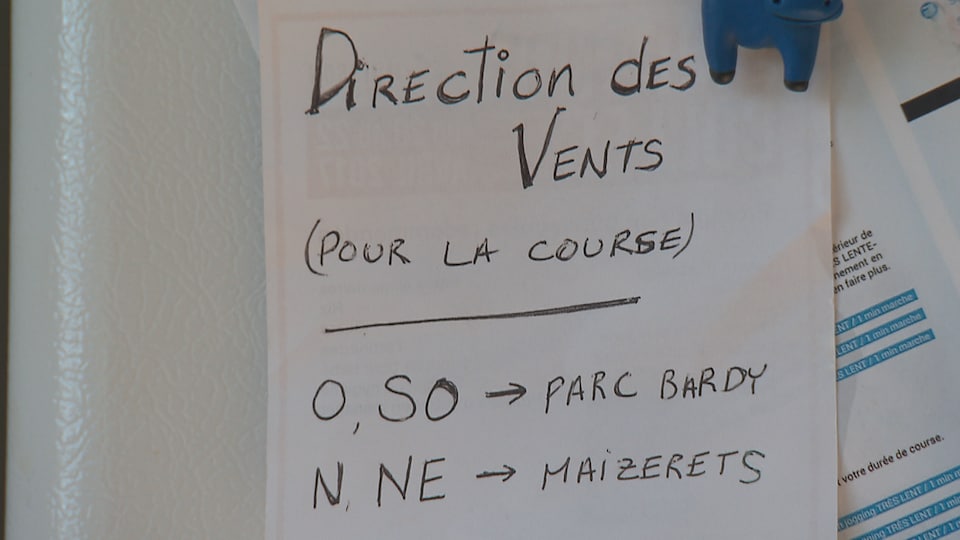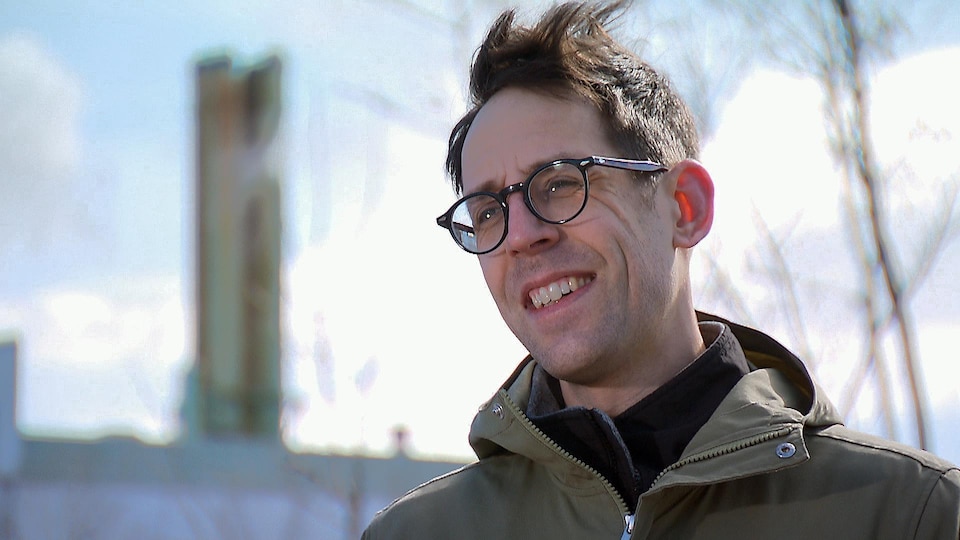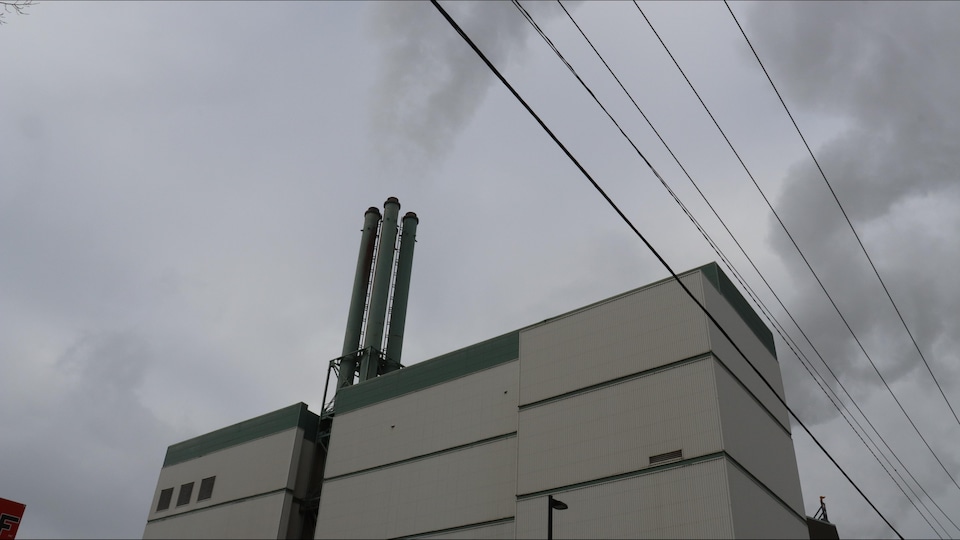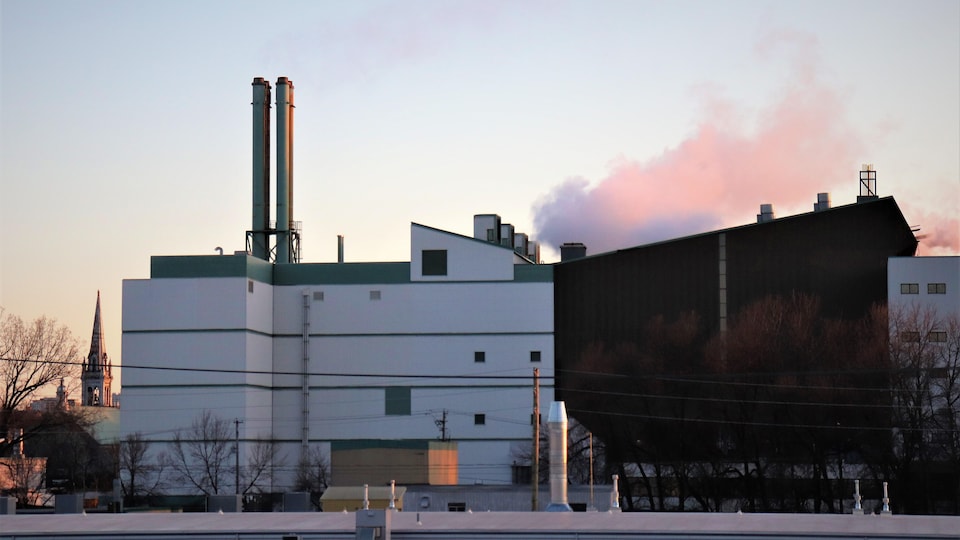The 38-year-old father no longer allows himself to jog around his home if the winds push the waste from the incinerator there. On the fridge in his kitchen, he notes their direction daily to determine the route for the day. When we go for a run, my girlfriend and I go in the opposite direction.
Despite the repeated releases of the authorities claiming that the incinerator does not significantly influence the air quality of the neighboring districts, the trained chemist is unable to believe this version, especially after consulting the latest studies on the matter.
Behalf intellectual honesty
he has spent the last two years debunking the work of the Quebec Ministry of the Environment and the Fight against Climate Change (MELCC), which he considers incomplete, even erroneous.
With a few collaborators, he produced a 66-page report on a voluntary basis which he is about to submit to the ministry. A copy will also be sent to Mayor Bruno Marchand. He criticizes methodological shortcomings
and thereby the conclusions that have been drawn so far.
These studies should not be used in decision making
on the incinerator, slice Patrick Ferland, whose demonstration is essentially an invitation to the government and the City to redo their homework.
He mentions in his counter-report selection biases that lead to an underestimation of pollutant concentrations
, insufficient characterization […] atmospheric dispersion of contaminants
as well as low spatial and temporal representativeness of sampling
used by the MELCC.
The conference that changed everything
Concerned about the air quality in his living environment in general, Citizen Ferland was looking for a way to contribute to the debate when he undertook to tackle the Department’s studies.
The click was made during a meeting organized in June 2019 by the local deputy, the solidarity Sol Zanetti. For long hours, Slavko Sebez, a retiree from the Regional Public Health Department of the Capitale-Nationale, had undermined these same studies of the MELCC.
” Coming out of the meeting, I was appalled and indignant enough to decide to act. I felt the need to verify Mr. Sebez’s claims for myself. »
Although he had discussions with the office of Sol Zanetti, Patrick Ferland assures that he carried out his work without partisan influence. I certify that this work is completely independent
he wrote in his report. I acted according to my most intimate convictions and with the greatest scientific rigour.
He reveals in passing that he has received the support of the deputy in his efforts.
Two collaborators chosen by Mr. Ferland have in fact obtained 50-hour contracts from Mr. Zanetti’s office. The first was used for the entry of certain data by a chemist colleague, while the second enabled the hiring of a resource to help her write the report.
Insufficient data
The latest study of MELCCpublished in 2018, is adamant. The incinerator does not constitute […] not a significant source of ambient air quality deterioration for the contaminants analyzed
can we read there.
According to its authors, the air quality in the Québec–Vieux-Limoilou station sector is typical of that of an urban environment
and the main sources of contamination responsible for the concentrations of contaminants measured at the stations are the usual urban sources
.
However, according to Patrick Ferland, they did not have the data in hand to make such a definitive statement. Conclusions were drawn on too little information
he summarizes.
The study of MELCC was essentially based on samples obtained from April 2010 to March 2012 at two temporary stations, one in Maizerets (Vitré) and the other in Vieux-Limoilou (Beaujeu). The sites were chosen according to the prevailing winds and therefore near the sectors likely to be most affected by the plumes of smoke from the incinerator.
Patrick Ferland first deplores the number of checkpoints, which he believes are clearly insufficient. He would have favored a greater number of stations at different distances from the incinerator, in each of the axes, in order to compare the results according to the position in relation to the source of the emissions.
What’s more, the two temporary stations were set back from the most exposed areas, yet determined by ministry modeling.
Nor is it explained why some of the main contaminants emitted by the incinerator were not measured at the Beaujeu and Vitré stations. Nitrogen oxide, sulfur dioxide, mercury and PM 2.5 were not captured there.
” These are four of the most important substances and they have not been measured downstream of the smoke plume. They were measured at a more distant station which is not affected by the incinerator. »
The data from the temporary stations were indeed compared to the readings obtained at the station witness
from rue des Sables, i.e. the permanent Québec–Vieux-Limoilou station, located further south and called unaffected
by the incinerator.
The authors’ approach is questioned by Mr. Ferland, who cites the example of sulfur dioxide (SO₂). In the report of MELCCIt is written that the incinerator does not appear to be a significant source of SO₂
. However, this observation is made from data from the Sables station, theoretically much less exposed to pollutants from the incinerator
.
The chemist recalls that in parallel, the authors do not demonstrate that the incinerator does not affect the levels of
sulfur dioxide at the two temporary stations, since they did not measure this contaminant. However, this would have validated their results and conclusions.
Representativeness questioned
Patrick Ferland’s second opinion also criticizes the lack of representativeness of the samples used to create the modeling (2011 and 2015 studies) of the incinerator’s emissions. According to him, the authors should at least have made a caveat and mentioned the limits of this modelling.
In particular, he criticizes the exclusion, within the modeling of the MELCC, spikes in dioxin and furan emissions, sometimes exceeding the norm by up to 66 times when the furnaces start up. Those omissions
would lead to an underestimation of the emissions of these carcinogenic contaminants.
Once again, questions are raised about the representativeness of the ministry’s work.
To be representative of reality, atmospheric emission control measures should be able to reflect the fluctuations inherent in the incineration process and the characteristics of the residual materials.
writes the chemist.
But at a rate of twice a year, these measurements of atmospheric emissions are too infrequent, he believes, in addition to being carried out during the same periods from time to time.
The Bureau des audiences publiques en environnement made the same observation this winter regarding the incinerator.
The requirement of [Règlement sur l’assainissement de l’atmosphère] carry out at least one source sampling per year […] is clearly insufficient to ensure compliance with the standards. The commission of inquiry considers that the regulation should be revised for this purpose to allow a reliable and representative assessment of the fluctuations in emissions.
concluded the commissioners.
Reference-ici.radio-canada.ca



